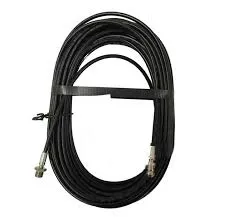repairing power steering hose
Repairing Power Steering Hose A Comprehensive Guide
Power steering is an essential feature in modern vehicles, allowing for easier and more controlled steering. At the heart of this system is the power steering hose, which transports hydraulic fluid between the power steering pump and the steering gear. Over time, these hoses can develop leaks, cracks, or other wear-related issues that can compromise the efficiency of the power steering system. This article aims to guide you through the process of diagnosing and repairing a faulty power steering hose.
Understanding the Power Steering Hose
The power steering hose is typically made from reinforced rubber and is designed to withstand high pressure and internal fluid dynamics. There are usually two types of hoses in a power steering system the high-pressure line, which carries fluid from the pump to the steering gear, and the low-pressure return line, which brings fluid back to the reservoir. It's crucial to understand the functions of these hoses to effectively address any issues.
Symptoms of a Bad Power Steering Hose
Before you proceed to repair a power steering hose, it’s important to identify the symptoms indicating that a repair is needed. Common signs include
1. Fluid Leaks The most obvious sign is the presence of hydraulic fluid pooling under your vehicle. The fluid is usually a reddish-brown color and has a slightly oily texture.
2. Steering Difficulties A compromised power steering hose can lead to reduced assistance, making steering feel heavy, especially at low speeds.
3. Squeaking or Whining Noises If you hear unusual noises while turning the steering wheel, it could indicate that the power steering pump is struggling due to low fluid levels caused by a leak.
4. Warning Lights Some vehicles are equipped with indicators that will light up if the power steering system is malfunctioning.
Tools and Materials Needed
Repairing a power steering hose requires some specific tools and materials
repairing power steering hose

- Replacement power steering hose - Basic hand tools (wrenches, pliers, screwdriver) - Fluid catch pan - Power steering fluid - Safety gloves and goggles - New hose clamps (if necessary)
Steps for Repairing the Power Steering Hose
1. Preparation Begin by ensuring that the vehicle is parked on a flat surface and the engine is turned off. Engage the parking brake for safety.
2. Locate the Hose Open the hood and locate the power steering pump and the hoses connected to it. Identify whether the high-pressure or low-pressure hose needs replacement.
3. Drain the Fluid Place a fluid catch pan under the power steering system to catch any fluid that might leak when the hoses are removed. Loosen the connection points with your wrench, and allow the fluid to drain completely.
4. Remove the Old Hose Once drained, carefully disconnect the old hose from the fittings. Be prepared for some residual fluid, and ensure that you’re wearing safety gloves and goggles.
5. Install the New Hose Take the new power steering hose and attach it to the fittings. Ensure that you’re using the correct orientation and that the connections are secure. If your hose came with new clamps, make sure to replace old ones.
6. Refill the Power Steering Fluid Once the new hose is installed, refill the power steering reservoir with fresh power steering fluid. Consult your vehicle's owner manual for the correct type of fluid.
7. Bleed the System To remove any air trapped in the system, turn the steering wheel from lock to lock several times while the engine is running. This will help circulate the fluid and ensure the system is functioning correctly.
8. Check for Leaks After the bleeding process, inspect all connections for leaks. If everything looks good, take the vehicle for a test drive to ensure the power steering is functioning properly.
Conclusion
Repairing a power steering hose is a straightforward task that, with the right tools and knowledge, can be accomplished by most DIY enthusiasts. Regular maintenance and inspections can prevent issues from escalating and ensure that your vehicle’s steering remains responsive and safe. If you encounter any complications or if the problem persists after replacing the hose, it may be wise to consult a professional mechanic for further diagnosis and repair. Remember, maintaining your power steering system is crucial for a smooth driving experience.
-
Reliable Brake Line Solutions for Your VehicleNewsJun.05,2025
-
Quick Fix for Leaky Air Conditioning HosesNewsJun.05,2025
-
Powerful Sewer Jetting Solutions for Tough ClogsNewsJun.05,2025
-
Power Steering Hose Problems SolvedNewsJun.05,2025
-
Hose Protectors That Actually WorkNewsJun.05,2025
-
Essential Hose Connectors for Every HomeNewsJun.05,2025

